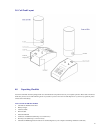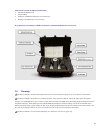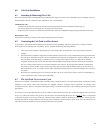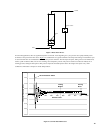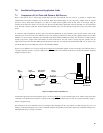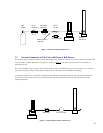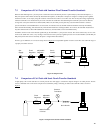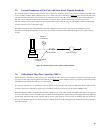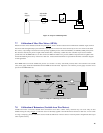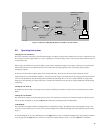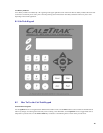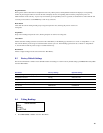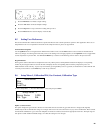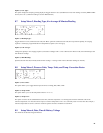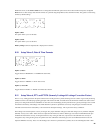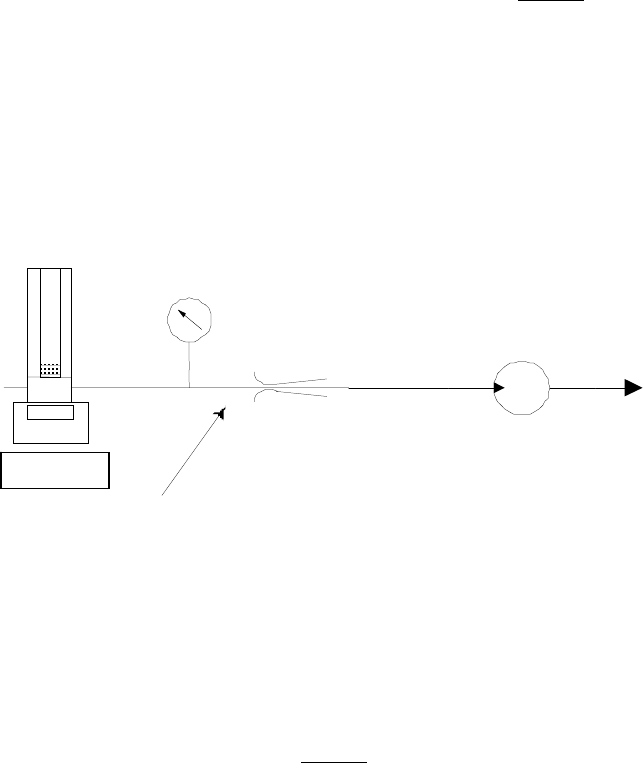
15
7.5 Vacuum Comparison of Cal=Trak with Sonic Nozzle Transfer Standards
The Cal=Trak operates similarly in both pressure and suction applications. Sometimes, however, users wish to compare the Cal=Trak under
suction (vacuum) conditions. With a calibrated sonic nozzle, a simple setup such as that shown in Figure 10
can be used with the inlet to the
Cal=Trak flow cell at atmospheric pressure. There is one precaution, however. The sonic nozzle’s pressure must be measured during the
Cal=Trak cycle to obtain the actual flow that the Cal=Trak is measuring. In turn, the pressure transducer must not be upset by the
Cal=Trak’s initial pressure pulse and must have rapid response relative to the Cal=Trak cycle time. This method is therefore most suitable
for flows in the lower part of a Cal=Trak’s range.
It should be noted that cycling of the Cal=Trak would cause a slight change in the nozzle’s inlet pressure. Even though the pressure
transducer is read during the Cal=Trak cycle, the nozzle may not achieve internal thermal equilibrium during the cycle, slightly reducing
accuracy.
Sonic Nozzle
DryCal
Stable Pressure
> Critical
Pressure
Transducer
Vacuum Pump
Figure 10 Vacuum Setup for Sonic Nozzle Transfer Standard
7.6 Calibration of Mass Flow Controllers (MFCs)
Modern mass flow controllers have fast response times on the order of milliseconds. They can simply be connected to an appropriate inert
gas source and their output stream applied to the Cal=Trak, as in Figure 11
. Proper calibration consists of comparing the Cal=Trak reading
to the MFCs actual indicated flow and not to its control signal.
If a slow flow controller is to be calibrated, it is best to calibrate it in its metering mode. Apply the appropriate signal to fully open the
controller’s internal valve (full scale or digital “open), and calibrate the device as shown for mass flow meters (MFMs), below.
Remember that the Cal-Trak is designed to be operated at ambient pressure. If the outlet pressure of the MFC is atmospheric, then Figure 9
is correct. If the outlet pressure of the MFC is above ambient, insert a back-pressure regulator and a pressure gauge between the MFC and
the Cal=Trak. Adjust the back pressure regulator until the pressure gauge reads the correct pressure for the MFC under test (usually the
same pressure the device will see in its normal operation). Calibrate under the actual operating pressures with the outlet of the Cal=Trak at
atmospheric pressure.
Cal=Trak



